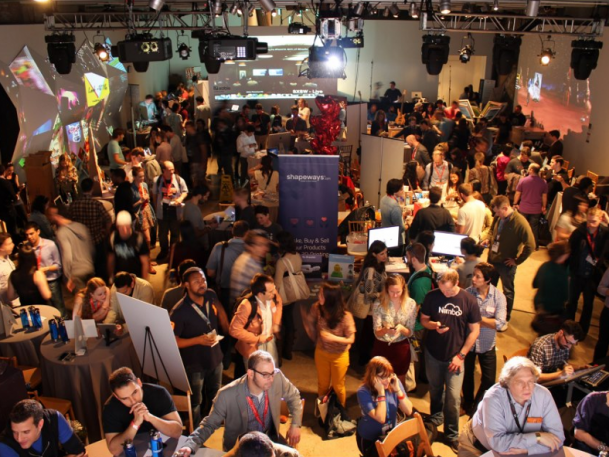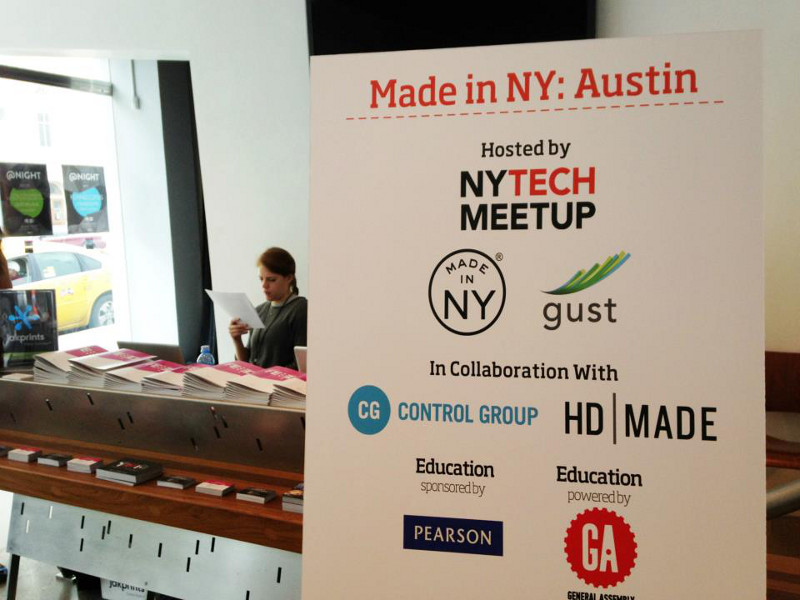
This week was New York International’s second time attending South by Southwest (SXSW), the film, interactive, and music conference and festival, which takes place in Austin, Texas every year. What started off as a small independent music festival has evolved into a mega conference for everything from finding new music talent to investing in new technology. It is an event not to be missed by aspiring tech entrepreneurs, venture capitalists, anyone interested in promoting their newer products, and by the tens of thousands who work in digital industries.The size of the conference is huge by any standard – registration of attendees has grown to 25,000 and over 900 conference sessions take place in more than six venues all over downtown Austin. Though there were big names like Al Gore and Bill Gates drawing crowds, there was no apparent groundbreaking technology unveiled or breakthrough companies that launched at SXSW this year. The 3D printing technology was certainly a major topic, to the point where you could use portable 3D printers at parties – who knows when a 3D printer will come in handy?The sheer amount of people attending has its advantages and disadvantages. The plus side? One is very likely to run into interesting people and can make great contacts everywhere, even waiting in line for coffee or tacos. The downside? The many people will also fight you for seats at each session. This year there were many disappointed visitors who could hardly get into any of their desired sessions despite waiting over an hour – especially in the first two or three days. Given that tickets are expensive (starting in the $800 bracket) and the overall cost of getting get to and staying in Austin during the convention is quite high – the organizers will need to address these issues for future events in order for attendees to get their money’s worth. The best part of SXSW was probably not found in the official program, but in the many meetups and private parties that were held in addition to the conference. New York City wasn’t left behind – the “Made in NY” campaign had an entire dedicated space to network and to showcase New York City’s startup community. The floor of the AMoA Arthouse brought more than 3,500 visitors through the door to check out 40 startups from New York. From 3D printing companies to stock photo companies and voice recognition technologies, “Made in NY: Austin ” presented the best of New York’s emerging and vibrant startup community. Larger, well-funded startups (such as Rent a Runway) held talks in the 17 sessions that felt more intimate than the larger sessions at the main SXSW conference. Everyone was lucky to find this information in the larger context of SXSW!From an international perspective, the conference has grown considerably over the past years. Countries like Canada, Chile, South Korea, the Netherlands, and Germany had either a presence on the floor or in rented houses – and in some cases they did both. The main goal of the international presentations was to attract U.S. entrepreneurs willing to venture out and to offer participating international companies a possibility to showcase their technologies and products. Certainly smaller in venue size and slightly off the beaten track of the main convention, it showed that SXSW has certainly drawn not only international technologists, but also participants interested in learning about opportunities to start businesses outside of the U.S.International sessions not only focused on the countries known for startup communities like Chile and Israel, but also shed a light on lesser-known destinations. Eastern Europe, for example, was represented by its own session.In terms of showcased companies and themes we were sorry to see the educational technologies session pulled out of the main SXSW Interactive sessions and squeezed into the week prior to opening. Few participants (most of whom have day jobs) can afford to attend a week of conference sessions and meetings.As with last year, the best moments happened by coincidence: Meeting inspiring women entrepreneurs at a discussion about work-life balance, listening to Wholefoods CEO John Mickey talk about the future of conscious businesses (and his hope in the young generation), and mixing at parties each night.SXSW does have a purpose, but in order to remain a sustainable convention we suggest the following:
The best part of SXSW was probably not found in the official program, but in the many meetups and private parties that were held in addition to the conference. New York City wasn’t left behind – the “Made in NY” campaign had an entire dedicated space to network and to showcase New York City’s startup community. The floor of the AMoA Arthouse brought more than 3,500 visitors through the door to check out 40 startups from New York. From 3D printing companies to stock photo companies and voice recognition technologies, “Made in NY: Austin ” presented the best of New York’s emerging and vibrant startup community. Larger, well-funded startups (such as Rent a Runway) held talks in the 17 sessions that felt more intimate than the larger sessions at the main SXSW conference. Everyone was lucky to find this information in the larger context of SXSW!From an international perspective, the conference has grown considerably over the past years. Countries like Canada, Chile, South Korea, the Netherlands, and Germany had either a presence on the floor or in rented houses – and in some cases they did both. The main goal of the international presentations was to attract U.S. entrepreneurs willing to venture out and to offer participating international companies a possibility to showcase their technologies and products. Certainly smaller in venue size and slightly off the beaten track of the main convention, it showed that SXSW has certainly drawn not only international technologists, but also participants interested in learning about opportunities to start businesses outside of the U.S.International sessions not only focused on the countries known for startup communities like Chile and Israel, but also shed a light on lesser-known destinations. Eastern Europe, for example, was represented by its own session.In terms of showcased companies and themes we were sorry to see the educational technologies session pulled out of the main SXSW Interactive sessions and squeezed into the week prior to opening. Few participants (most of whom have day jobs) can afford to attend a week of conference sessions and meetings.As with last year, the best moments happened by coincidence: Meeting inspiring women entrepreneurs at a discussion about work-life balance, listening to Wholefoods CEO John Mickey talk about the future of conscious businesses (and his hope in the young generation), and mixing at parties each night.SXSW does have a purpose, but in order to remain a sustainable convention we suggest the following:
- Give participants the ability to pre-register for sessions – it will help in planning room assignments and will alleviate the frustration of many participants – take note of the Davos system.
- Don’t abandon the concept of cross-over sessions and topics during SXSW Interactive by creating more “dedicated” tracks like SXSW Education. While it might be a nice way to maximize on the brand, the draw of hearing about topics one is less familiar with will vanish.
- Cater to small functions as well: While big names like Al Gore and Bill Gates help for PR, these sessions do not cater to fostering a SXSW community; have a look at the many meetups and small spaces – it’s easier for participants to participate and to network in these smaller sessions.
- When pricing for next year, think of the target group, the startup generation that still lives on a shoestring. Prices have been soaring over the past years, but there needs to be an opportunity for those who have not been funded yet to both attend and exhibit at the conference.
Overall, SXSW still proves to be one of the most inspiring events to go to – the energy and slightly quirky parties leave everyone impressed by what is possible when many creative minds gather.

